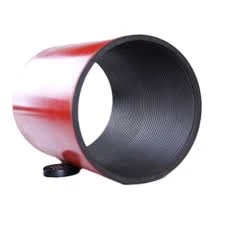- Afrikaans
- Albanian
- Amharic
- Arabic
- Armenian
- Azerbaijani
- Basque
- Belarusian
- Bengali
- Bosnian
- Bulgarian
- Catalan
- Cebuano
- Corsican
- Croatian
- Czech
- Danish
- Dutch
- English
- Esperanto
- Estonian
- Finnish
- French
- Frisian
- Galician
- Georgian
- German
- Greek
- Gujarati
- Haitian Creole
- hausa
- hawaiian
- Hebrew
- Hindi
- Miao
- Hungarian
- Icelandic
- igbo
- Indonesian
- irish
- Italian
- Japanese
- Javanese
- Kannada
- kazakh
- Khmer
- Rwandese
- Korean
- Kurdish
- Kyrgyz
- Lao
- Latin
- Latvian
- Lithuanian
- Luxembourgish
- Macedonian
- Malgashi
- Malay
- Malayalam
- Maltese
- Maori
- Marathi
- Mongolian
- Myanmar
- Nepali
- Norwegian
- Norwegian
- Occitan
- Pashto
- Persian
- Polish
- Portuguese
- Punjabi
- Romanian
- Russian
- Samoan
- Scottish Gaelic
- Serbian
- Sesotho
- Shona
- Sindhi
- Sinhala
- Slovak
- Slovenian
- Somali
- Spanish
- Sundanese
- Swahili
- Swedish
- Tagalog
- Tajik
- Tamil
- Tatar
- Telugu
- Thai
- Turkish
- Turkmen
- Ukrainian
- Urdu
- Uighur
- Uzbek
- Vietnamese
- Welsh
- Bantu
- Yiddish
- Yoruba
- Zulu
pasing pup joints
Passing Pup Joints A Comprehensive Guide
In the dynamic world of pipeline construction and maintenance, understanding the intricacies of joint configurations is essential for ensuring safety and efficiency. Among various types of joints, the pup joint has emerged as a crucial component, especially in the context of oil and gas pipelines. This article delves into the implications of using pup joints, their design, applications, and overall significance in pipeline systems.
What is a Pup Joint?
A pup joint is a short length of pipe, typically ranging from 1 to 12 feet, that is used to adjust the length of a pipe string. It is categorized as a type of casing or tubing joint, and is often employed to connect longer sections of pipe or to accommodate specific configurations required during installation. The term pup refers to its shorter length compared to standard pipe sections, providing flexibility in arrangements without compromising structural integrity.
Design and Specifications
Pup joints are designed to meet rigorous industry standards, ensuring that they can withstand high pressures and corrosive environments common in oil and gas operations. They are manufactured from various materials, including carbon steel, stainless steel, and alloy steels, depending on the application's demands. The design also includes considerations for threading types, which can be either welded or threaded, allowing for secure connections.
One of the critical aspects of pup joint design is the adherence to safety regulations such as the American Petroleum Institute (API) standards. These guidelines ensure that the joints can endure the mechanical stresses encountered in both offshore and onshore installations. Quality control measures are implemented rigorously during manufacturing to maintain the high durability and reliability expected from these components.
Applications of Pup Joints
The versatility of pup joints makes them applicable in a myriad of situations in the oil and gas sector. They are often used in
1. Pipeline Adjustments When constructing or repairing pipelines, pup joints provide the necessary adjustments to ensure a precise fit. They can compensate for elevation changes or alignments required in complex routing scenarios.
pasing pup joints

2. Well Completion Pup joints are vital in the completion phase of drilling operations. They can assist in adjusting the depth of casing strings or modifying the equipment layout to optimize production.
3. Repair and Maintenance In cases where sections of the pipeline need replacement or refurbishment, pup joints offer a quicker and more cost-effective solution than replacing entire pipe sections.
4. Flow Control Devices Pup joints can be integrated with various flow control devices, enhancing the efficiency of fluid transport by allowing easier access for maintenance or modifications.
5. Connections in Subsea Operations With the rise of subsea drilling, pup joints are increasingly being used to connect components in underwater pipelines, where space and alignment can be challenging.
Safety Considerations
While pup joints offer numerous advantages, it is critical to ensure they are installed properly to mitigate risks. A poorly fitted joint can lead to leaks, which in turn may result in environmental disasters or operational failures. Regular inspections and maintenance routines should be established to check the integrity of joints throughout their lifecycle.
Training for personnel involved in the installation and maintenance of pipeline systems should also highlight the correct handling and torque specifications for pup joints. By emphasizing adherence to safety protocols, the risks associated with pipeline operations can be significantly reduced.
Conclusion
In conclusion, pup joints play an invaluable role in the oil and gas industry, offering flexibility and adaptability in pipeline systems. Their design and applications extend beyond mere functionality; they contribute significantly to safety, efficiency, and cost-effectiveness in operations. As the demand for energy continues to rise globally, understanding the role of pup joints in pipeline construction and maintenance will remain essential for engineers and operators alike. The integration of technology and innovation will likely enhance the capabilities of pup joints, ensuring they meet the ever-evolving standards of the industry. In this way, pup joints not only support the infrastructure of energy transportation but also align with the broader goals of sustainable and safe resource management.
-
Well Casing Extension Couplings – Applications and InstallationNewsJun.06,2025
-
Types of Crossover Subs in Drilling & CompletionNewsJun.06,2025
-
Key Features of High-Quality Tubing Pup JointsNewsJun.06,2025
-
Installation and Maintenance Tips for Steel Couplings for PipeNewsJun.06,2025
-
How to Select the Right Pup Joint for Oil & Gas OperationsNewsJun.06,2025
-
Applications of Stainless Steel Pipe CouplingsNewsJun.06,2025







